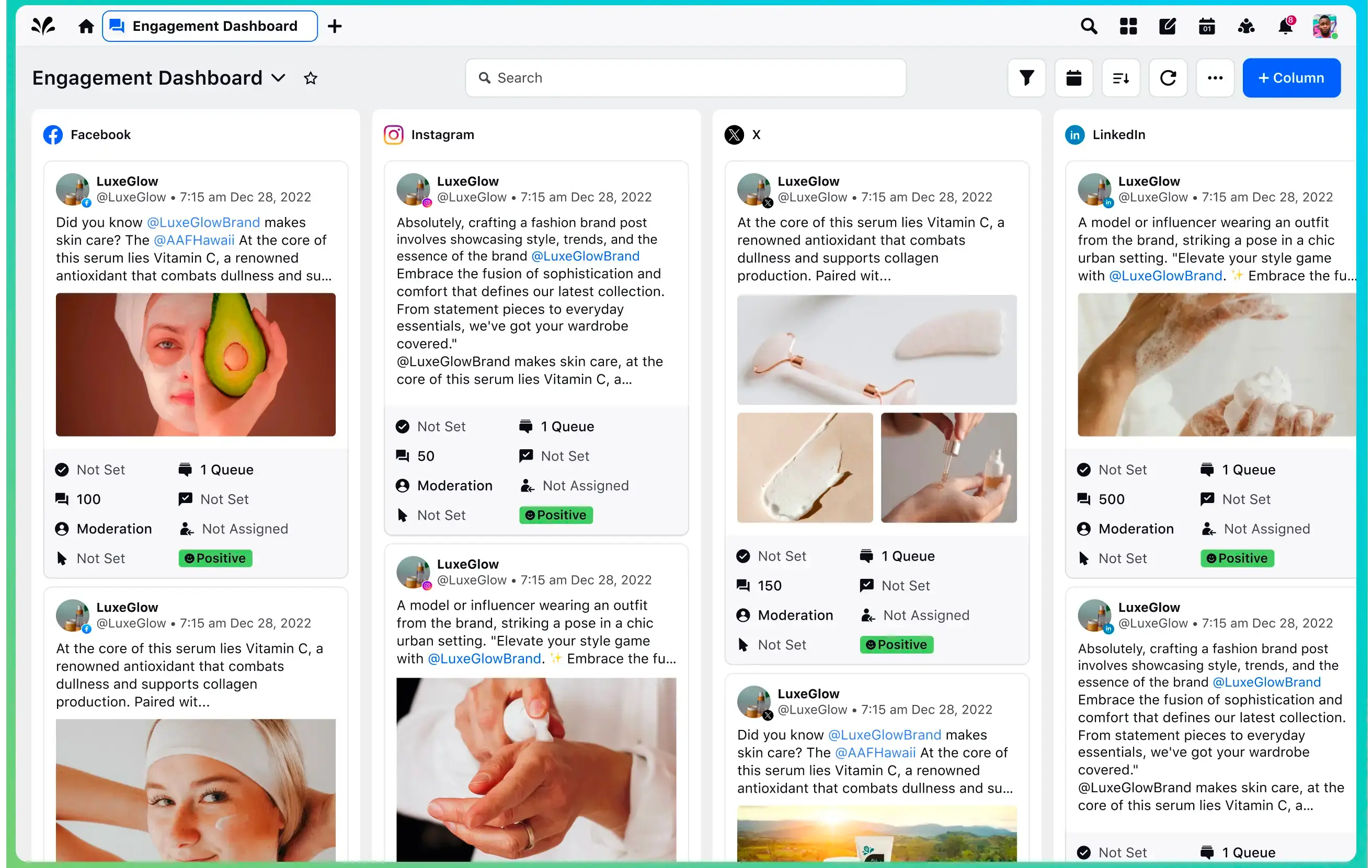The undisputed leader in social media management
For over a decade, the world’s largest enterprises have trusted Sprinklr Social for its in-depth listening, unmatched channel coverage, enterprise-grade configurability and industry-defining AI.

Four Ways AI Can Improve Revenue Operations
When I first began advising businesses some years ago, I noticed what I thought was a “data gap.” Marketing, sales, customer success, and product teams were not aligned, and they definitely weren’t sharing data across the customer lifecycle to make decisions. Granted, marketing didn’t want to spend too much engaging with prospects who would never buy, but alignment among departments tended to be sporadic and haphazard at best.
This problem, I’ve learned, is more ubiquitous than I realized at the time, and it’s too important to be labeled a “data gap.” Instead, the issue is fragmentation, and it affects organizations of every type. In too many companies, the customer lifecycle is fragmented, with strategies and tactics driven by individual departments’ goals. This results in conflicting metrics of success, inefficiencies, and often enormous missed opportunities to create and capture value.
Enter the field of revenue operations, or RevOps. RevOps is a relatively new framework that seeks to ensure that marketing, sales, and customer success teams are all rowing in the same direction. By creating alignment around the customer, RevOps also has deep implications for product management, design and strategy.
How can a business leader make sure that RevOps doesn’t become merely a buzzword? How can a business leader implement and maintain alignment that drives actual value, profit and growth? The answer lies in a strong foundation of advanced analytics and AI.
Here are four ways that advanced analytics and AI ensure success with RevOps:
1. Creation of common metrics
At the heart of any good analytics strategy is measurement of important outcomes. Business leaders need to ask themselves, “What metric, if changed, provides evidence of value created?” If marketing doubles the number of prospects that it sends to sales, but sales doesn’t close any more deals, then marketing hasn’t created value. If the sales team closes 10% more deals, but these new customers have low lifetime value, then sales hasn’t created 10% more value. RevOps requires precise and agreed-upon metrics and thus, works hand-in-hand with advanced analytics to ensure the right things are measured.
2. Foundation of evidence
Too often, sales and marketing leaders argue over why a prospect fizzled out or a deal was lost: a lead wasn’t qualified well, the handoff was botched, or the follow-up was too slow. AI eliminates this post-hoc – and often fruitless – debate by providing a foundation of rigorous evidence of what worked, what didn’t, and where the real gaps were. By eliminating guesswork, AI leads to real fixes in real time because leaders can no longer hide behind siloed data and misaligned goals.
3. Lifecycle insights
When departments operate in isolation, they can only use advanced analytics and AI tools to detect trends to support their department-specific goals. For instance, embedding AI into a siloed marketing department can, at best, improve marketing outcomes, like leads generated or sponsorship ROI. Advanced analytics for the sales team might improve territory design, quota-setting, or sales operations. But this department-specific view is needlessly myopic. Sales activities are relevant to the organization as a whole, not to only the sales team. Fortunately, advanced analytics and AI tools allow businesses to explore firm-wide relationships relatively easily. When businesses use RevOps and AI to identify insights across the customer lifecycle, they can allocate their resources to the most important business-wide outcomes, not department-specific goals.
4. Small wins for big gains
By tightening up alignment across departments, RevOps can lead to sizable gains even with small improvements within and between each department. Consider a customer funnel with 5 distinct stages: for instance, marketing generates leads, which are assigned to sales reps, which enter a sales pipeline, which yield closed deals, which turn into loyal long-term customers. Improvement of only 3% at each stage due to improved alignment compounds to a 16% gain in overall lifecycle results. RevOps with AI boosts the bottom line even more dramatically because AI helps managers make two critical decisions: 1) where to spend their resources — that is, how best to acquire and cultivate high-value customers in the best way; and 2) where not to spend resources — that is, how to identify customers whose cost-of-service will outweigh their value. Even when the shift in resource allocation is very small on a per-customer basis, the aggregate results can lead to significant increases in profitability.
RevOps is an important way for companies to ensure that all of their revenue-generating activities are coordinated and working towards common organizational targets. With AI, RevOps becomes even more powerful. Coordination is improved, costs are mitigated, customer experience is enhanced, and resources are laser-targeted towards meaningful big-picture business goals.
This article was written by Joel Shapiro from Forbes and was legally licensed through the Industry Dive publisher network. Please direct all licensing questions to legal@industrydive.com.
